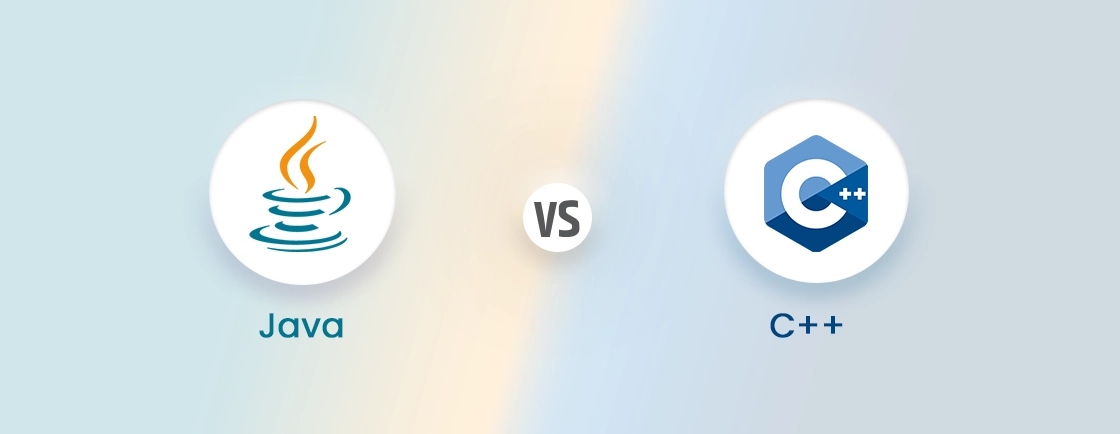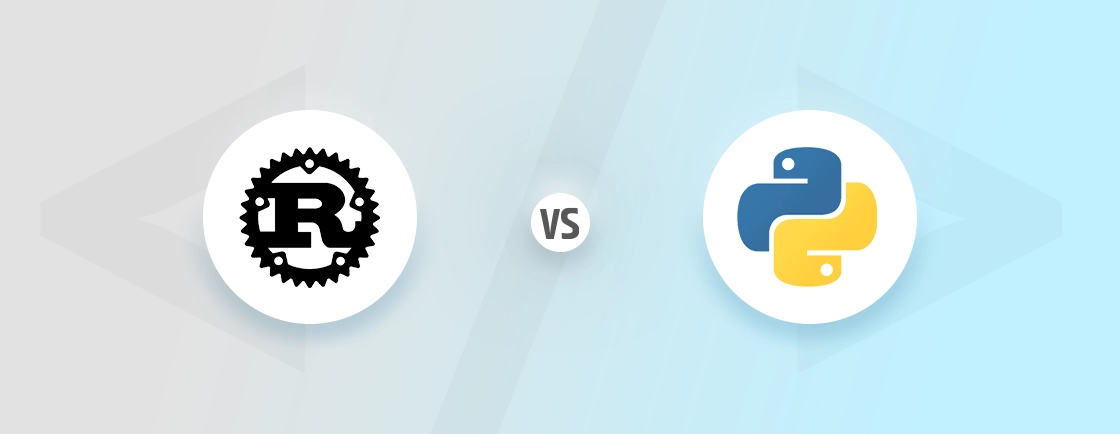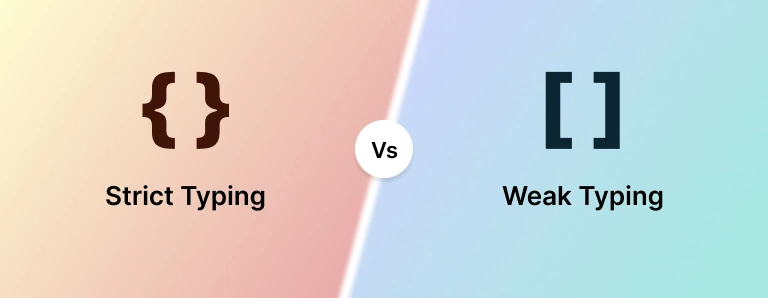Table of Contents
Where the term web development is revised every day, the choice of technologies plays a crucial role in determining the functionality, performance, and user experience of applications. PHP and Angular stand out as two pivotal components in the web development landscape, albeit serving different purposes.
PHP, a server-side scripting language, has been a winning player in web development for decades. It’s renowned for its flexibility, simplicity, and wide-ranging capabilities in handling server-side operations. On the other hand, Angular, a front-end framework, has redefined the way developers create dynamic and robust web applications.
From the server-side capabilities of PHP to the client-side power of Angular, understanding their differences and optimal use scenarios can significantly influence the decision-making process for developers and businesses. Let’s explore the comprehensive comparison between PHP and Angular to discern their applications, features, and potential use in various development scenarios.
PHP vs Angular: Detailed Comparison
Before delving into the specific subsections comparing PHP and Angular, it’s essential to underscore the importance of understanding these technologies in the context of web development.
Importance of PHP vs Angular Comparison
In this intricate ecosystem, PHP and Angular emerge as cornerstone entities, each representing distinct domains within web development. PHP, renowned as a veteran in server-side scripting, contrasts with Angular, a modern and sturdy front-end framework. Let’s move on to the detailed comparison of these powerful technologies.
1. Overview of PHP vs Angular
Known for its simplicity, flexibility, and compatibility with various databases, PHP specializes in generating dynamic content, handling forms, and database interactions. Its syntax, resembling C and Perl, enables widespread adoption and usage.
Angular, developed by Google, is a robust front-end web framework based on TypeScript. It is well-known for its structured architecture, which facilitates the creation of dynamic single-page applications. With features like two-way data binding, modular design, and dependency injection, Angular empowers the development of highly interactive and responsive web applications.
This section provides a fundamental understanding of PHP’s server-side capabilities and Angular’s robust front-end framework, setting the stage for a detailed comparison between these technologies.
PHP
PHP, standing for Hypertext Preprocessor, is a server-side scripting language predominantly used for web development. Introduced in 1994, PHP has evolved into a robust language known for its scalability and compatible integration with various databases.
Its primary function involves the generation of dynamic content, handling forms, using PHP cookies, and interacting with databases, making it a core component in creating web applications. PHP’s syntax, resembling C and Perl, enables developers to quickly grasp the language, facilitating widespread adoption and usage.
- Versatility in Web Solutions: Adaptable for a wide array of web development needs
- Database Compatibility: Seamlessly integrates with various databases
- Dynamic Content Handling: Proficient in managing dynamic content and form processing
- Developer-Friendly Syntax: Easy-to-understand syntax akin to C and Perl, easing adoption
Angular
Angular, developed and maintained by Google, is a comprehensive front-end web application framework. Built on TypeScript, Angular is known for its robust features that facilitate the creation of dynamic single-page applications.
Its architecture offers a structured environment for developers, providing features like two-way data binding, modular design, dependency injection, and more. Angular’s framework enables the development of highly interactive and responsive web applications, making it a popular choice among developers for modern web development.
- Structured Development Environment: Offers a well-structured environment for efficient application development
- Powerful Features: Including two-way data binding, modular design, and dependency injection
- User Engagement: Empowers the creation of highly interactive web solutions
- Google Maintenance: Ensures consistent updates and support for modern web development needs
In this section, we’ve explored the foundational characteristics of both PHP and Angular. PHP conducts server-side scripting and excels in handling dynamic content and database interactions.
2. Ease of Installation in PHP vs Angular
The comparison of ease of installation between PHP and Angular focuses on the streamlined, accessibility, and user-friendliness of setting up and configuring these technologies for development purposes.
PHP
The installation process for PHP varies depending on the operating system and the desired setup. It involves different methods such as manual installations, using package managers, or direct compilation. The ease of installation relies on the familiarity of the user with the chosen method and the system environment.
- Varied Installation Methods: Options include manual setup, package managers (like apt or yum), or source compilation.
- System Dependency Considerations: Installation can be affected by specific requirements on different operating systems.
- Configuration Complexity: The ease of installation may vary based on the user’s familiarity with server configurations.
Angular
Installing Angular is typically facilitated through the Angular CLI (Command Line Interface) and the Node Package Manager (npm). With Angular CLI, developers can initiate, manage, and build Angular applications. The installation process is designed to be straightforward, utilizing npm for easy installation and project setup.
- Angular CLI Convenience: Provides easy creation and management of Angular projects.
- npm Integration: Utilizes npm for seamless installation and handling of dependencies.
- Simplified Project Setup: Angular’s design streamlines the initial setup process for developers.
This section has clarified the varying processes of installing PHP and Angular. PHP installations may have diverse complexities based on system configurations, whereas Angular, with its CLI and npm integration, offers a more standardized and user-friendly installation process. The subsequent sections will further explore and compare the distinct installation methodologies of these technologies.
3. Technology Toolkit in PHP vs Angular
While Angular, a modern front-end framework, helps in creating highly responsive and interactive single-page applications. The subsequent sections will delve deeper into specific aspects, providing a comprehensive comparison between these two technologies.
The comparison of the “Technology Toolkit” in PHP and Angular delves into the extensive array of tools, libraries, and resources available to developers within each ecosystem. These toolkits provide the foundational building blocks and utilities necessary for the creation, management, and enhancement of web applications.
PHP
Within the realm of PHP, the technology toolkit encompasses a diverse range of libraries, frameworks, and tools designed to aid in server-side scripting and web development. These tools offer functionalities for database connectivity, content management, and diverse solutions for creating dynamic web applications.
- Database Connectivity Solutions: Various libraries and extensions facilitate interaction with multiple databases.
- Content Management Tools: Frameworks and utilities empowering efficient content handling and manipulation.
- Web Application Development Resources: A suite of tools supporting dynamic web application creation and maintenance.
Angular
The technology toolkit in Angular comprises a sophisticated array of tools, libraries, and resources tailored for front-end development. These tools provide the necessary building blocks for crafting dynamic, interactive, and responsive single-page applications.
- Front-end Development Libraries: Comprehensive libraries supporting the creation of responsive and interactive user interfaces.
- Component-based Architecture Tools: Resources and utilities enabling the creation of modular and scalable applications.
- Dependency Management Solutions: Tools facilitating dependency injection and management for streamlined development.
We covered varied technology toolkits present within PHP and Angular. Where PHP offers a range of solutions for server-side development, Angular’s toolkit empowers front-end developers with resources for crafting interactive and scalable single-page applications. The subsequent sections will further explore and compare the distinctive tools and resources within these technology toolkits.
4. Scalability in PHP vs Angular
The comparison of scalability in PHP and Angular focuses on the ability of these technologies to grow, adapt, and handle increasing demands or workloads efficiently. Scalability determines how these frameworks accommodate expanding user bases and evolving requirements while maintaining performance and stability.
PHP
Scalability in PHP involves the language’s capability to handle growing complexities and increased traffic within server-side scripting and web development. It encompasses mechanisms for load balancing, caching strategies, and architecture design, allowing applications to scale gracefully as user demand surges.
- Load Balancing Strategies: Methods to distribute traffic evenly across servers for improved performance.
- Caching Mechanisms: Implementations to store frequently accessed data, optimizing response times.
- Architecture Design: Structuring applications for modularity and efficiency, ensuring scalability as user demand grows.
Angular
Scalability in Angular refers to the framework’s ability to manage larger and more complex front-end applications effectively. It involves components like efficient state management, code organization, and architectural patterns enabling applications to expand without compromising performance.
- State Management Efficiency: Tools and techniques ensuring streamlined state handling within applications.
- Optimized Code Organization: Strategies for maintaining a scalable and manageable codebase.
- Architectural Patterns: Design principles facilitating the development of large and scalable applications while maintaining performance.
This section has highlighted the pivotal aspect of scalability in both PHP and Angular frameworks. Scalability in PHP focuses on managing server-side complexities and increased traffic, while Angular’s scalability is centred around efficient front-end application management. The subsequent sections will delve deeper into a comparative analysis, exploring the distinct scalability mechanisms within PHP and Angular.
5. Security in PHP vs Angular
The comparison of security between PHP and Angular emphasizes the measures and capabilities inherent in each technology to ensure the protection of applications against potential vulnerabilities and threats.
PHP
Security in PHP involves employing various practices and tools to mitigate risks in server-side scripting and web development. It includes strategies for input validation, secure database handling, preventing SQL injection, and implementing secure coding standards.
- Input Sanitization Practices: Methods to validate and sanitize user inputs to prevent vulnerabilities.
- Secure Database Handling: Techniques for secure interaction and management of databases.
- Preventing SQL Injection: Implementations to safeguard against SQL injection attacks.
- Adherence to Secure Coding Standards: Best practices for writing secure PHP code.
Angular
Security measures in Angular focus on front-end application protection against common web vulnerabilities. It involves features like built-in cross-site scripting (XSS) protection, secure data binding, and adherence to practices that mitigate common security threats.
- Cross-Site Scripting (XSS) Protection: In-built features to prevent XSS attacks.
- Secure Data Binding: Techniques to ensure safe and secure data manipulation and rendering.
- Adherence to Secure Coding Practices: Implementing practices that minimize common web vulnerabilities.
- Regular Updates and Patches: Ensuring security by timely updates and fixes to potential vulnerabilities.
This section has highlighted the pivotal aspect of security in both PHP and Angular frameworks. The major difference is PHP emphasizes server-side security practices and secure coding standards, Angular focuses on front-end application security with in-built protections against common vulnerabilities. The subsequent sections will delve deeper into a comparative analysis, exploring the distinct security measures within PHP and Angular.
6. Use Cases of PHP vs Angular
In this comparison, use cases between PHP and Angular aim to highlight the diverse application scenarios where each technology excels, providing insights into their specific domains and strengths within the web development landscape.
PHP
PHP serves as a versatile server-side scripting language, catering to a wide array of web development applications. Its flexibility and functionality enable various use cases such as:
- Dynamic Website Development: PHP is widely employed in creating dynamic websites with versatile content and functionality.
- eCommerce Solutions: Powering ecommerce platforms with features like shopping carts, payment gateways, and product catalogs.
- Content Management Systems (CMS): Platforms like WordPress, Joomla, and Drupal rely on PHP to manage content effectively.
- Server-Side Application Logic: Implementing server-side functionalities for web and mobile applications.
- API Development: Creating robust APIs for seamless communication between web and mobile applications.
- Database Interaction: PHP allows seamless interaction with databases for data retrieval and manipulation.
Angular
Angular’s significance lies in creating modern, dynamic, and interactive front-end applications, excelling in various use cases including:
- Single-Page Applications (SPAs): Angular is a go-to choice for developing SPAs with fluid, responsive user experiences.
- Interactive Web Applications: Crafting highly engaging and interactive web solutions for users.
- Enterprise Applications: Building comprehensive business and enterprise-level applications.
- Real-Time Dashboards: Developing dashboards providing real-time insights and updates.
- Complex User Interfaces: Implementing intricate and sophisticated user interfaces in web applications.
This section has illustrated the broad spectrum of applications for both PHP and Angular. PHP’s versatility spans across various server-side applications and web solutions. On the other hand, Angular excels in crafting modern, interactive, and real-time user experiences within front-end web development. The subsequent sections will delve deeper into a comprehensive comparison of the distinct use cases of these technologies.
Which One to Choose in PHP vs Angular?
The decision to choose between PHP and Angular depends entirely on the specific requirements, scope, and nature of the project in question. Both PHP and Angular cater to different aspects of web development, operating in distinct domains. Here’s a breakdown to consider while making a choice:
Consider PHP if:
If you need a reliable solution for robust server-side functionality, database interactions, and server logic – PHP will be the best choice for you. There are several other criteria mentioned below, that you can correspond from and check whether your requirements meet it or not.
- Server-side Functionality is Key: If you require robust server-side functionality, database interaction, and server logic, PHP is a reliable choice.
- Dynamic Web Content: For projects involving content-heavy dynamic websites, CMS development, or server-side application logic, PHP’s versatility is valuable.
- API Development: If creating APIs for web and mobile applications is a significant part of your project, PHP’s capabilities in this area are strong.
- Legacy Systems or CMS Integration: PHP is often used in legacy systems or widely-used CMS platforms such as WordPress, Joomla, and Drupal.
Consider Angular if:
Think of Angular for highly interactive single-page applications with modern design and responsive user experiences. This programming language stands out as a strong choice for building comprehensive enterprise-level applications due to its robust and scalable features.
- Modern Web Application Development: For crafting highly interactive, modern, and responsive single-page applications, Angular is an ideal choice.
- User Experience and Front-End Interactivity: If your focus is on creating engaging user interfaces and interactive applications, Angular’s features shine.
- Real-Time Applications: For projects requiring real-time updates, dashboards, or complex user interfaces, Angular’s capabilities are well-suited.
- Enterprise-Level Applications: Angular is a strong choice for comprehensive business and enterprise-level applications.
If you find Angular to be more suited to your needs, consult with an Angular development company. Always remember, to achieve real-time results the right deployment is most important.
But if you feel like PHP can provide a more customized design and backend for your web application, we offer professional services for those as well.
Factors to Consider When Choosing Between PHP and Angular
Key considerations include aligning project needs with the strengths of each technology, assessing the team’s expertise, and evaluating scalability for future growth. The ultimate choice depends on specific project requirements and available resources for effective implementation.
- Project Scope and Requirements: Assess the specific needs of your project and align them with the strengths of each technology.
- Development Team Expertise: Consider the familiarity and expertise of your development team with either technology.
- Scalability and Future Growth: Consider the potential for scalability and growth, aligning with your future project needs.
In many cases, projects can even use both technologies collaboratively, utilizing PHP for server-side operations and Angular for front-end development. The choice ultimately hinges on the specific demands and objectives of the project, along with the expertise and resources available for implementation.
Let’s Summarize
The space of web development has been evolving, and the choice between PHP and Angular stands as a pivotal decision, impacting the foundation and functionality of your projects. Each technology, PHP for robust server-side scripting and Angular for modern front-end frameworks offers distinct capabilities tailored to specific development needs.
Whether you’re considering PHP for its proven server-side functionalities or Angular for cutting-edge front-end experiences, our experienced team is equipped to guide you through this journey. With over 5 years of expertise in both PHP and Angular development, we’re dedicated to providing tailored solutions for your unique project requirements.
If you have questions or need expert assistance with PHP or Angular development, we’re here to help. We offer web developers for hire for the best results.
FAQs About PHP vs Angular
When should one choose PHP over Angular?
Choose PHP when building server-side applications, handling databases, or managing backend logic for websites and CMS platforms like WordPress.
How does PHP differ from Angular in development focus?
PHP is a server-side scripting language focused on backend development, while Angular is a frontend framework designed for building dynamic, client-side single-page applications (SPAs).
What are the notable strengths of Angular in modern web development?
Angular excels in creating fast, interactive UIs with two-way data binding, modular architecture, built-in dependency injection, and strong support for enterprise-level applications.
Compare the best tech side by side.
Our in-depth comparisons help you see features, pros & cons, and choose the right tools confidently.





